Diabetes can be cured with a strict and balanced diet. A diabetic diet slows the progression of the disease and has a beneficial effect on the patient's condition. Must be observed frequently. The main way to prevent bad outcomes is self-discipline and a varied diabetes menu.

General advice
When diabetes is just beginning, foods high in carbohydrates and sugars must be restricted as they can increase blood sugar levels. However, despite the established restrictions, the body needs a balanced intake of useful ingredients. In this case, the doctor will prescribe a meal for the patient. Not following a diet can negatively affect your health. Of course, prescription medication must be taken. However, a detailed diabetes diet compiled by a doctor will only improve the physical condition.
In order to control hunger, you need to eat frequently - at least 5-6 times a day, and in small amounts, including main meals and snacks.
For diabetic patients, there are principles of dietary therapy. If you have grade 1 obesity, it's best to prioritize vegetables and fruits over flour or fatty foods. Dressing a salad with olive oil and a few drops of lemon works even better. To speed up metabolic processes in the liver, the diet should include low-fat cheese, soy, oatmeal, and lean fish. Vegetable soup is best prepared from the first course. You should wait for the broth or cook the broth on secondary broth. Need to limit the consumption of eggs, potatoes, corn. Few, if any, and few. As for salt, it is recommended to consume less than half a teaspoon per day. Best is sea salt.
Nutritional characteristics of different categories
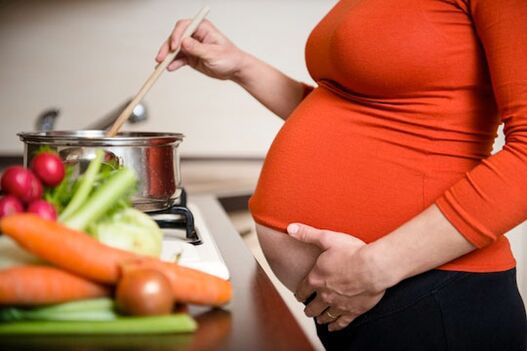
In fact, the purpose of the diet depends on the type of diabetes and the category the patient falls into: nutrition will vary for children, pregnant women, people who are insulin-dependent, or people with diabetes. While general dietary principles apply to all categories, each of them requires a separate approach in this regard.
Simple foods are the best nutrition for a diabetes-related pregnancy.
A strict diet for people with type 1 diabetes (that is, those who need insulin) should include foods rich in protein and fiber. You will have to limit your intake of salt, fat, fast carbohydrates, and gastrointestinal irritants, and also contain sugar.
In type 2 diabetes, diet helps reduce the calorie content of food and normalize metabolism compared to insulin-maintaining diabetes. As blood sugar becomes too high, such a diet can affect its lowering. The same diet will be provided during an episode of diabetes. Pregnant women should eat as balanced a diet as possible to avoid harming the baby. The best diet for expectant mothers is simple food.
About the glycemic index and calories
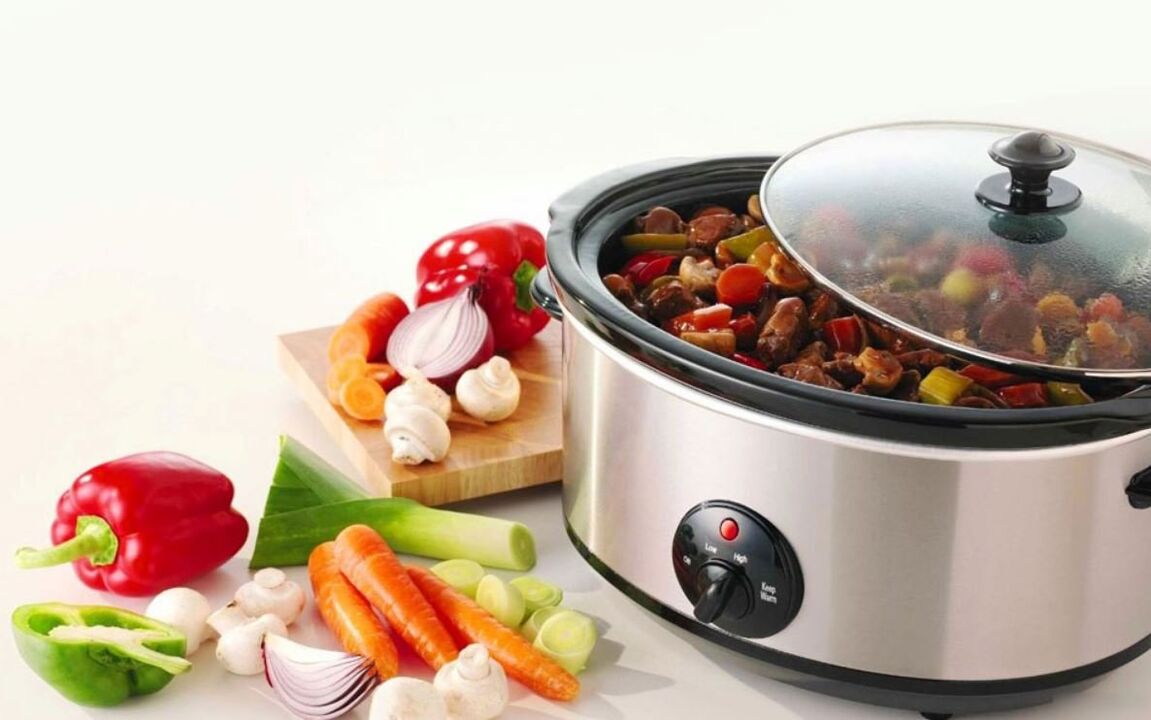
The nutritional value of a product determines how much of the useful ingredients are converted into energy for the body. The glycemic index of a food indicates how quickly carbohydrates are absorbed while increasing blood sugar levels. Therefore, with type 2 diabetes, you should eat foods with a low glycemic index because the carbohydrates in them have time to be consumed by the body and evenly distributed among them. And foods that are so high in carbohydrates can lead to fat deposits that don't have time to be fully converted into energy.
In addition to the number of calories, the glycemic index values for various foods can also be found on a table from 0 to 100. But in order to plan your diet effectively, you need to consider many factors that affect calorie content and changes in the glycemic index. mainly includes:
Cooking in a slow cooker is an acceptable way to heat food.
- Cooking methods. The glycemic index of foods increases with heat treatment, especially when fried. Products should be baked, boiled or cooked in a slow cooker.
- Fiber properties. Eating the peels of fruits, grains, and legumes slows the breakdown of glucose and prevents an increase in the glycemic index.
- Ripeness of fruits and vegetables. The riper the fruit, the higher the calories.
what can you eat
The initial stages of diabetes may not be complicated if dietary treatment is strictly followed.
Here is a list of foods that can make your daily eating menu as diverse as possible:
- Vegetable broth-based soups, and a low-fat meat first course 1-2 times a week;
- whole-wheat and bran bread;
- Cooked, steamed or roasted chicken, turkey, rabbit, veal;
- Most edible seafood and low-fat fish: pink salmon, cod, pike;
- Buckwheat, wheat porridge, oatmeal;
- low-fat milk and cheese;
- 1 egg per day;
- vegetables and unsweetened fruits;
- Homemade sauces from vegetables and dairy;
- desserts and dishes for diabetics;
- Any tea, coffee with milk, herbal teas (especially with rose hips), juices from fresh unsweetened fruit.
What is it that can not be eaten?
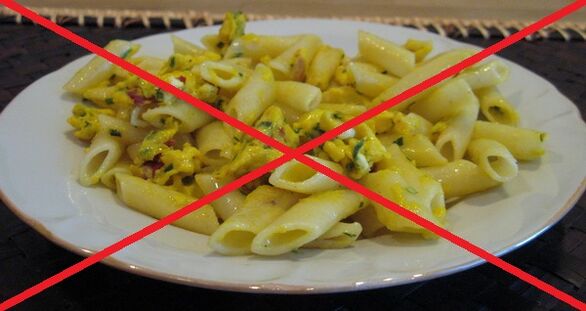
People with high blood sugar will have to give up pasta.
Foods that are not recommended for people with diabetes are:
- High-calorie desserts and pastries;
- chocolate and cocoa;
- jams, jams and honey;
- Fresh and dried fruits high in sugar, such as grapes and bananas, figs, raisins and dates;
- fatty meat dishes;
- animal fat;
- pasta, rice and semolina;
- smoked and canned;
- dairy products high in fat and sugar;
- Alcoholic beverages.
How to replace damage?
Diabetic menus should exclude savory and sweet items. But harmful products need the right substitutes. Diabetic foods are the easiest options. Options for replacing prohibited products can be found on regular grocery store shelves as well as on specialized shelves. This table shows which healthy foods can be substituted for banned foods.
| fasting | what to replace |
|---|---|
| white flour bread | peeled rye bread |
| Desserts and Desserts | Fruits of Trees and Shrubs, Desserts for Diabetes |
| animal fat | vegetable oil |
| Fat and Cheese | lean meat, avocado |
| cream | low-fat dairy |
Form number 9
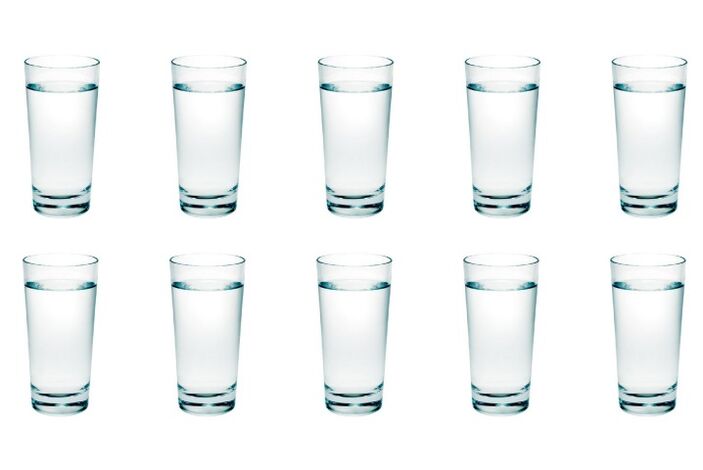
The diet consists of drinking approximately 2 liters of water per day.
According to Diet No. 9, the allowable daily calorie intake is no more than 2, 400 calories. Converted to grams, this equals 85 grams of protein, 80 grams of vegetable fat, and 300 grams of carbohydrates. The diet of patients with suspected diabetes should be physiologically balanced.
For people with diabetes and type 1 and 2 diabetes, the daily water intake should be 2-3 liters and 30-40 mm per kilogram of body weight. It is recommended to use only purified water, free of pathogenic microorganisms and bacteria.
Chronic lack of clean water can lead to dehydration/dehydration. For people with diabetes, 25% of fluid loss can be fatal.
In addition to clean water, diabetics can also use "mineral water". However, it may vary. The table version with up to 1 gram of mineralization per liter can be consumed without restriction. They contain safe amounts of minerals. Food "mineral water" stimulates digestion and improves insulin absorption. Before use, open the bottle and wait for the gas to "escape".
Sample menu
People with diabetes should have a varied diet.
The best solution is to create the menu a week or a month in advance. But for starters, you can have a menu every day. When compiling your menu, you should choose the recipes that are most prone to diabetes. In addition, from the usual dishes, you can also make a weekly menu. Correct daily nutrition will increase your chances of recovery. Below is a sample menu for diabetes.
| eat | dishes |
|---|---|
| breakfast | green salad, buckwheat or oatmeal, cottage cheese, boiled fish |
| first snack | Fruits, Stews, Preserves |
| dinner | Vegetable, fish, mushroom soup, fish soup; cooked meat, grain garnish |
| afternoon snack | Fruit or vegetable salad, cheesecake, tea |
| dinner | Steamed steak, stew |
| second dinner | Kefir, milk, yogurt |
main meal
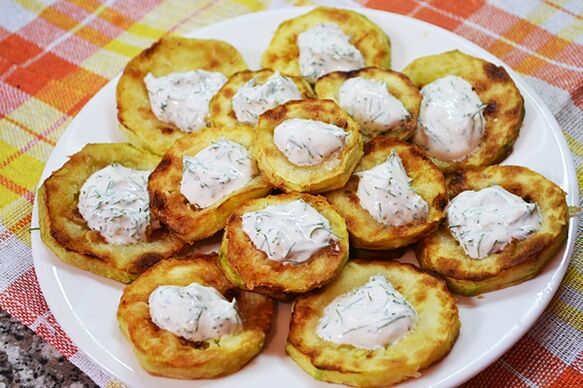
Breakfasts for diabetics should be hearty, but overeating and eating heavy foods, including grains and legumes, with the exception of buckwheat and oatmeal, is not worth it. You can make salads, mousses with fruits, berries and vegetables. Dairy products are also the foundation of a delicious breakfast. Lightly fried zucchini in a light sour cream sauce would make a great appetizer.
A good lunch for diabetics is mushroom, vegetable soup, cereal or legume soup cooked in broth. As a main course, you can have porridge with salad or steak. The best salad dressings are olive, flax or cedar oil, which are rich in polyunsaturated fatty acids. You can enjoy a snack with lactic acid products and add delicious fruit between meals.
Dinner should be light and nutritious. It's best to prepare a dish that consists mostly of protein. Combine healthy lentils with vegetables or salad for a diabetic dinner. If you're craving dinner, drink a glass of warm milk, fermented baked milk, or eat some low-fat cottage cheese before bed.
Other Diabetes Diet Charts
Table 8 is the optimal diet for overweight diabetic patients. But this diet is prescribed, provided there is no heart and gastrointestinal disease. The goal of the diet is to lose weight. Reduce salt and appetite-stimulating foods. You also need to drink no more than 1. 2 liters of water. Diet 8 allows you to eat no more than 1, 700 calories per day. They are 80 grams of protein, 70 grams of fat (one third of which are plants), 150 grams of carbohydrates and 6 grams of salt.
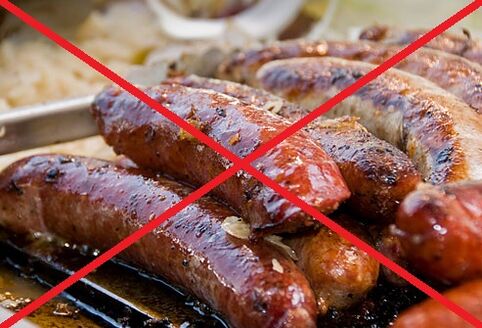
Doctors recommend that patients with diabetes and hepatobiliary diseases master the fifth table. The diet does not include fatty and fried foods, foods containing cholesterol, essential oils, oxalic acid. Food can be roasted or cooked, or stewed, but in special cases. This diet benefits the normalization of the digestive tract, rejuvenates and slows the development of diabetes.
The diet chart number is 10, and you need to give up high-fat foods.
For diabetics with heart disease, the diet corresponds to diet 10. Table 10 was developed to normalize blood circulation, heart rate and recovery metabolic processes in diabetic patients. The diet of diabetics avoids greasy, salty foods, and foods that are irritating to the nervous, circulatory, and gastrointestinal tract. Instead, you need to eat foods rich in iodine, potassium, and magnesium.
You can experiment with recipes by adding certain ingredients as permitted.
healthy recipes
vegetable snack
Cut 400 grams of cabbage, 6 small tomatoes, 2 carrots, 2 medium onions and 3 fresh peppers into large slices. The resulting ingredients need to be simmered in a small amount of vegetable oil over medium heat. as a separate dish. Delicious with poultry and veal or grilled fish. seasoning.
Baked Cabbage Pancakes
Cut cabbage into half a kilo, add parsley, dill, green onions, 1 tbsp kefir, 1 egg, 50 g brackish cheese, 1 tbsp bran, flour (until sour cream consistency). Combine the resulting ingredients and let cool for 30 minutes. Next, spread the pancakes on a baking sheet and bake at 180 degrees until golden brown.





















